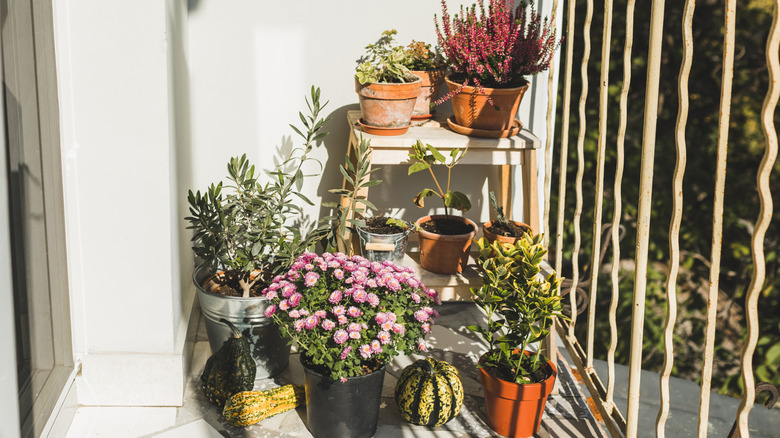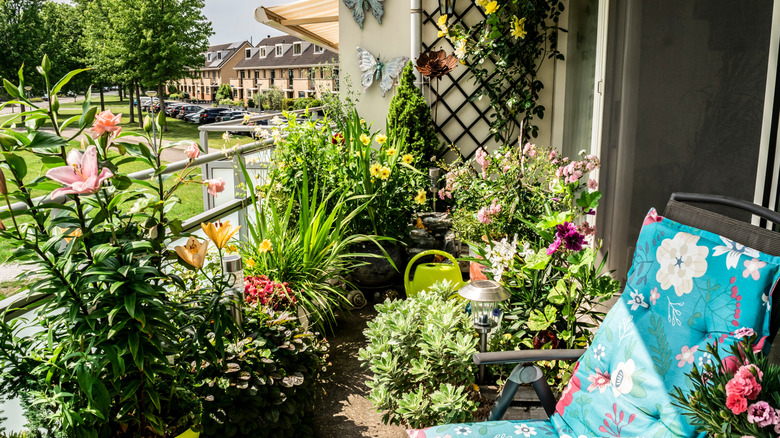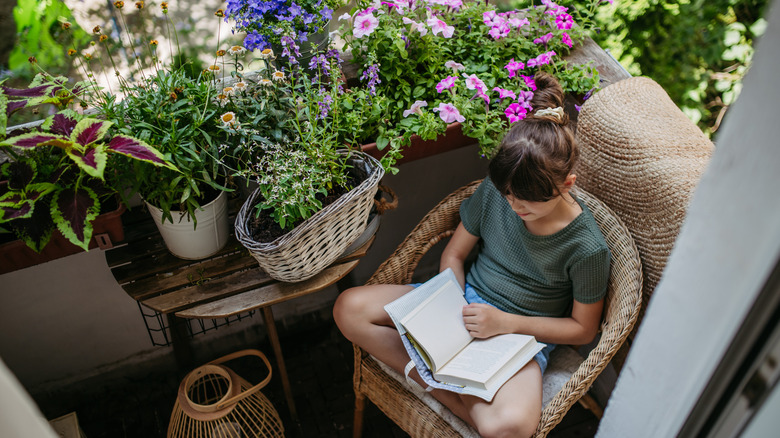The Best Way To Bring A Native Garden To Your City Balcony
Who says you can't be a city slicker and show off your green thumb at the same time? When you don't have space for an entire garden, there are still plenty of opportunities to cultivate plants in the space you have. Elevate your balcony by planting a native garden. Tending to plants that thrive in your region can be an excellent way to connect to nature while living in the city. All you have to do is familiarize yourself with your local fauna and select the varieties that will do well with the amount of sunlight your balcony receives while growing in containers.
You may ask, why plant native when you're not actually sowing any seeds directly in the ground? Well, there are still plenty of benefits to sticking with a native garden on your balcony. For starters, you won't need to bring your plants in during the winter. Just like any other local perennials or self-seeding flowers, they will simply go dormant and come back in the spring. That's particularly handy if you don't have a garage or another indoor space for overwintering plants. Planting natives can also help bolster pollinator populations in your area. It's a fulfilling project that can offer years of beauty typically reserved for someone with a yard. If you're ready to cultivate your own balcony oasis, complete with a bounty of native plants, follow these tips below.
Planning your balcony native garden
Before you start selecting natives plant to grow, assess your balcony. Is it facing south with plenty of direct light? Is it facing north or blanketed in partial shade? The plants you select will need to thrive in whatever amount of light you have available if they're going to stand the test of time. Consider how much weight your balcony can take as well. Balconies can hold anywhere from 40 to 100 pounds per square foot — that includes all of the planters, furniture, and items that stay on the balcony as well as people who use it. That being said, opt for fiberglass pots instead of heavy ceramic to minimize the load from your native garden. Not only is this option lightweight and sturdy, but it can also withstand cold conditions without cracking.
Remember, native plants that grow in the Midwest will differ from those that grow in the South or Northwest. When you're ready to start picking out plants, use tools such as the Native Plant Finder to search for suitable options that can grow successfully in pots. Be on the lookout for plants that do well in the amount of light your balcony receives. From there, whittle it down to plants that grow no more than 3 to 4 feet tall so they won't get knocked down. If you experience freezing temperatures in the winter, self-seeding annuals or plants without thick tap roots tend to weather the winter more resiliently. Fibrous roots also aid in holding the soil structure together and preventing a harsh freeze-thaw. Companion planting is a must to make good use of your limited space, so select plants that play nicely together.
Starting and caring for your balcony native garden
When you decide on what to plant, it's time to grab your gardening gloves and get to work. Line the inside of your pots with Styrofoam or some other insulation (but be mindful of proper drainage). This will help your plants survive the winter. Fill your pots with potting soil for a lightweight, fertile pot filler. Now it's time to establish your plants. Fall is an excellent time to start your new garden. Not only are pots generally on sale, but this also offers you the chance to over-winter bare roots or seeds. However, the ideal planting time varies based on the type of plant. Be sure to group pots together in an area that isn't too windy or sunny to prevent drastic temperature fluctuation. Add mulch for even more insulation. You can still start your balcony garden in the spring or summer, but they won't get the benefits of over-wintering, such as earlier blooms and general improved health.
Once your plants are established, it's vital to regularly water them. While many natives may be drought-resistant, they tend to need more water in pots because the soil dries out faster. You'll also need to stay on top of regular maintenance. Be sure to deadhead old blooms, fertilize, and harvest as needed based on what you plant. And finally, be patient. Gardening on a balcony is not impossible, but it is challenging. Don't be afraid to start small and ride the wave of trial and error. With persistence, you'll have an abundant native garden paradise just beyond your sliding glass door!


